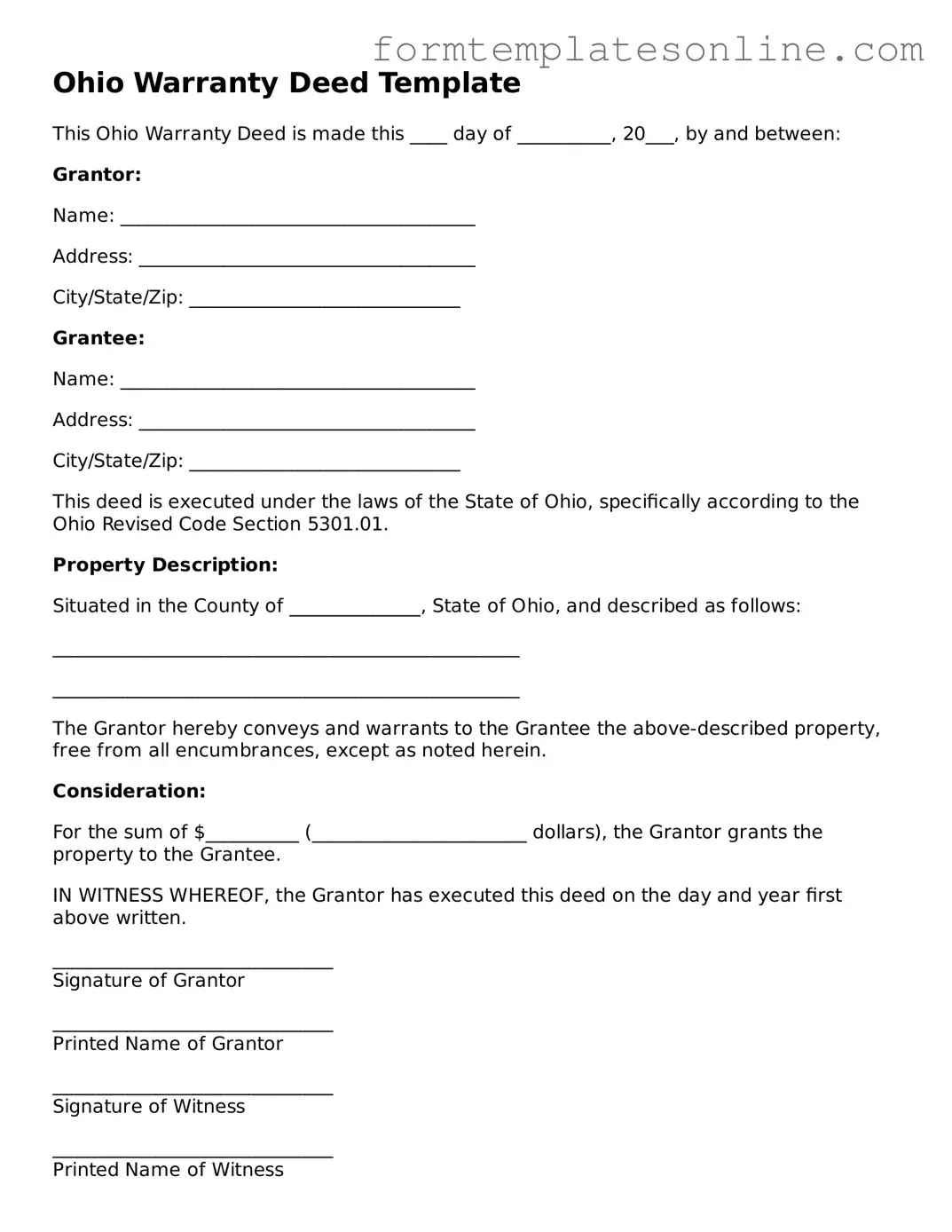Ohio Warranty Deed Template
This Ohio Warranty Deed is made this ____ day of __________, 20___, by and between:
Grantor:
Name: ______________________________________
Address: ____________________________________
City/State/Zip: _____________________________
Grantee:
Name: ______________________________________
Address: ____________________________________
City/State/Zip: _____________________________
This deed is executed under the laws of the State of Ohio, specifically according to the Ohio Revised Code Section 5301.01.
Property Description:
Situated in the County of ______________, State of Ohio, and described as follows:
__________________________________________________
__________________________________________________
The Grantor hereby conveys and warrants to the Grantee the above-described property, free from all encumbrances, except as noted herein.
Consideration:
For the sum of $__________ (_______________________ dollars), the Grantor grants the property to the Grantee.
IN WITNESS WHEREOF, the Grantor has executed this deed on the day and year first above written.
______________________________
Signature of Grantor
______________________________
Printed Name of Grantor
______________________________
Signature of Witness
______________________________
Printed Name of Witness
Notary Public:
State of Ohio
County of ______________
Subscribed and sworn to before me this ____ day of ___________, 20___.
______________________________
Notary Public
My Commission Expires: _____________
